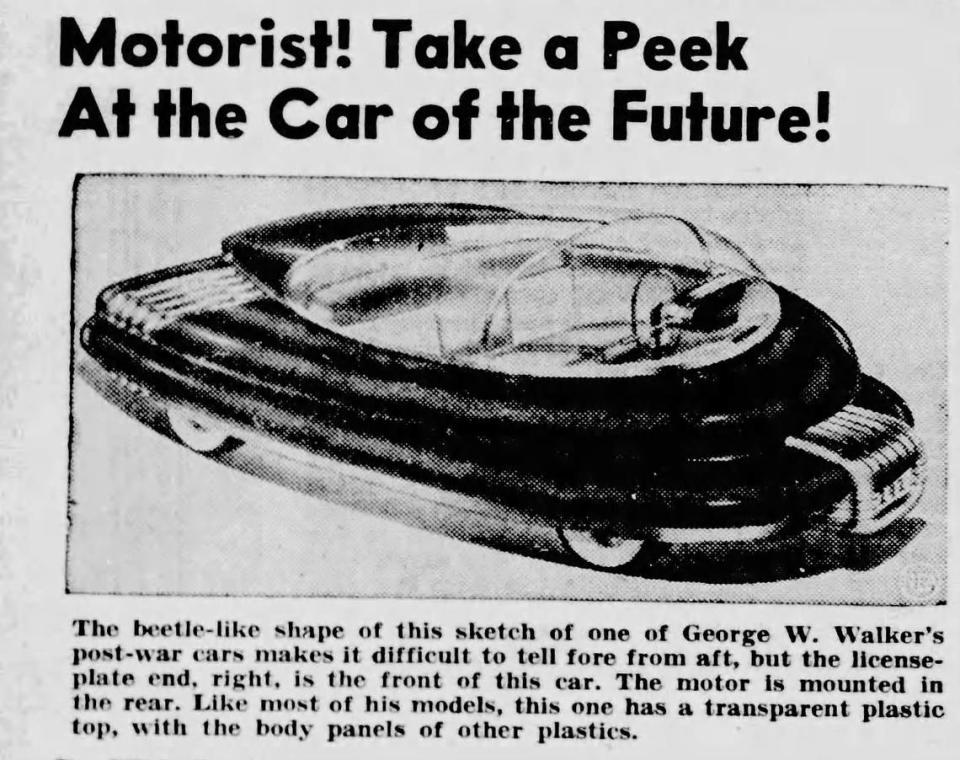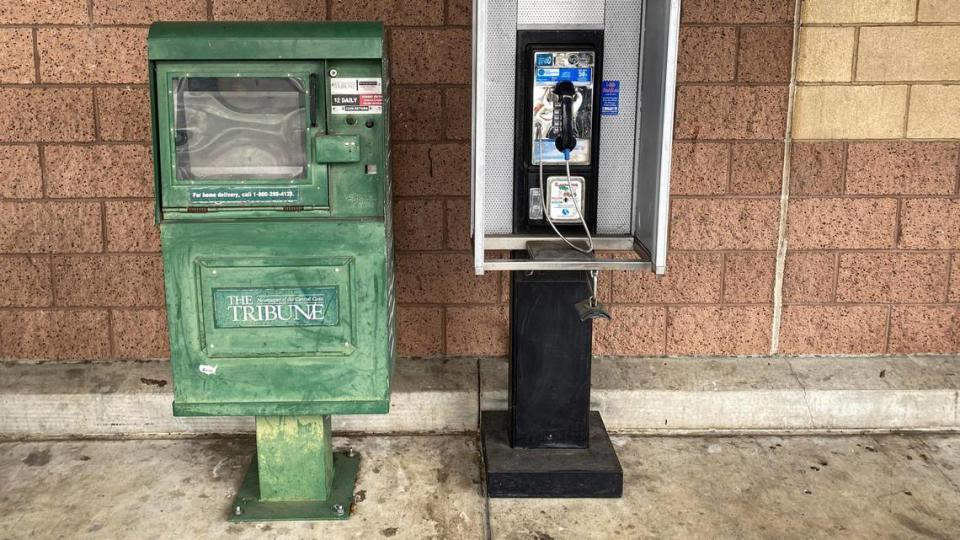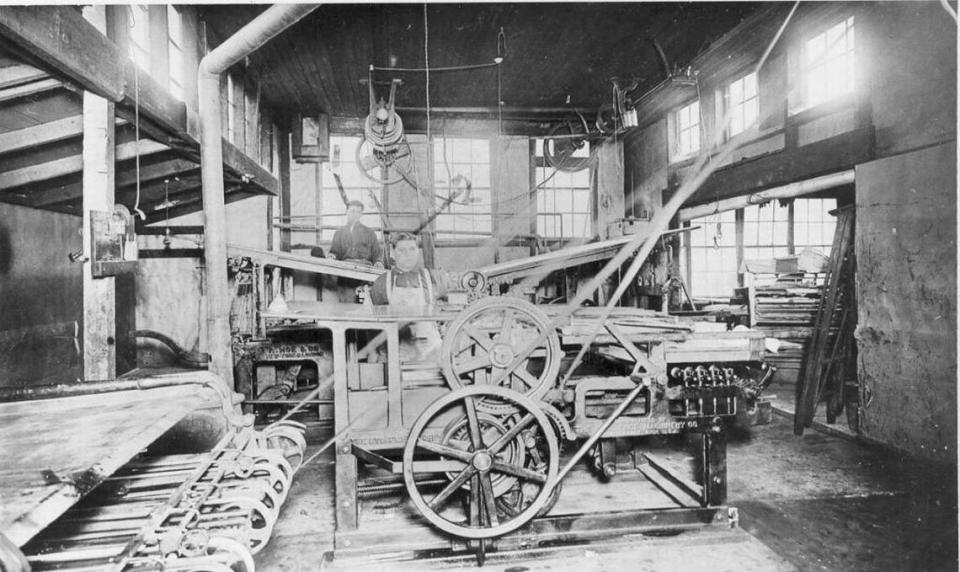The Tribune may be moving away from daily print — but commitment to readers remains the same
The futurists predicted someday electronic alerts would replace print — but they also told us we would get hovercars.
We did get the Dick Tracy watches, but the hovercars still float beyond the horizon.
When the announcement was made last week that The Tribune would soon reduce printing to two days a week, all of us in the newsroom felt a pang of melancholy.
There will be no reduction in the digital output. Stories will still be published every day, throughout the day as news dictates.
I enjoy the tactile print experience, but I also like to stay current with breaking news alerts on my cell phone.

My connection with newspapers began as a carrier, wearing a canvas bag on my shoulders and tossing them from a bicycle.
Gathering and delivering news is and always has been labor intensive.
For example when the tornadoes hit Los Osos and Grover Beach it was one of those 500-pound gorilla stories that upends a planned work day.
John Lynch and I drove to Grover Beach to interview eyewitnesses and to collect video and still pictures. We were uploading information to the story even as work crews were still carving up downed trees and clearing power lines from streets.
Stephanie Zappelli started the coverage by quickly writing the initial story, then she headed out to cover a candidate forum for a San Luis Obispo County Board of Supervisors race. Kaytlyn Leslie, Kathe Tanner and Mackenzie Shuman all jumped out of the stories they were previously working on and contributed through their extensive network of authoritative sources via phone and online.
Both Joe Tarica and Kaytlyn made sure the online story was packaged and republished as new information became available and helped brainstorm related stories for follow up coverage.
We bring stories to you, the reader, not because a faceless corporate overlord demands it, but because we live in this community and are intensely curious and want to share the stories of our neighbors’ experiences. And as we know from your comments and letters, our readers are also deeply curious about their communities.

How has print news changed over the years?
Decades ago, there were several income streams that subsidized newsprint subscription prices and kept them relatively low.
The print shop often sold job printing, from business cards to forms and other print publications. When an 1880s-era Tribune newspaper building was renovated, they found handbills, business cards and print shop type in the walls.
In the not-so-distant past, The Tribune presses were printing, folding and stapling TV guides for newspapers in the Bay Area. But those extra print jobs have largely gone.
During the same time that job printing was shrinking, the advertising market became fragmented by a variety of online marketplaces.
And to top it off, local businesses were hit with competition from online sellers like Amazon and big box retail.
Businesses that once advertised frequently in the newspaper like Riley’s, Mervyn’s and Gottschalks have all left the scene. Items that used to be found in newspaper classified ads are now scattered in dozens of online auction and direct sale websites.

And it’s not just newspapers that are affected, take a look a the phone book, it’s about the same size as a drugstore receipt these days.
Speaking of phones, AT&T is looking to get out of the landline phone business. Not many businesses out there that can operate the same way they did 20 years ago.
Meanwhile the paywall issue is as old as newspapers.
The founder of the first newspaper in San Luis Obispo, the Pioneer, would complain about people dropping by his office to read the paper without paying for a subscription. This was back in 1868-69.
Newspapers back then didn’t have a single copy price, they survived on one year or half-year subscriptions in the transient era that followed the Gold Rush.
Myron Angel, the Tribune editor who had the great idea to establish Cal Poly also tried to take The Tribune from a weekly print edition to a daily in the 1880s. The business execution of the idea failed however, and the paper was saddled with a great deal of debt. A new business manager, Benjamin Brooks was brought in and later as editor he was able to successfully publish a daily — but only after making sure the business side penciled out.

How The Tribune has adapted to changes in reporting in modern era
Here are some of the real reasons to support the journalism that have relevance to you.
Studies show communities without watchdog coverage have more corruption, taxes go up and voter participation starts to drop.
Civil discourse is more polarized as people without local community coverage are left to fall back on national information sources that tend to polarize issues in predictable ways. The nuance of local circumstances is lost when a global partisan lens is applied to all issues.
The Fourth Estate, journalism, refers to the one estate that monitors the other three judicial, legislative and executive. But unlike the others isn’t publicly funded. It is funded by readers.
Subscriptions have since the beginning supported reporting done by living, local reporters.
And that funding process helps align goals of the newsroom with reader interests.
In the old days, it took a process of months or years and competing publications to see what the market would support. Today that information is available in real time.
So what that means practically is you might only see one story on a municipal water rate change rather than a new story each time there is an incremental iteration of the process.
That time saved goes into long-term projects like the impacts of toxic chemicals polluting the groundwater, a deep dive into the county’s mental health diversion program, extensive coverage of the Kristin Smart murder trial and more stories about local business changes.
Another example: Thanks to those of you who subscribed or donated to the fund that helped create a reporter position covering housing issues, something that had been the corner of other reporter’s beats and is now the primary focus of one reporter.
With your assistance, we will continue to tell the stories of our community.
And for fans of Photos From the Vault, it will still be published in the virtual edition on Saturday and in the Sunday printed edition.

